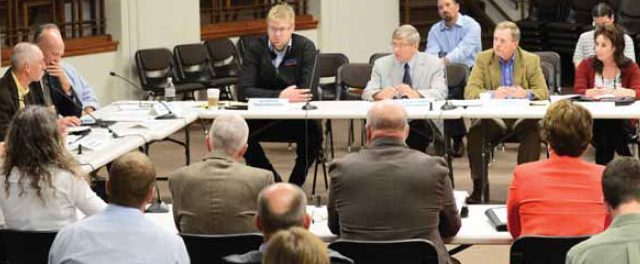Conservation Fund Can't Seem To Find Much Conservation To Fund

For the last couple of years now – going back to the petition push for a conservation fund measure on the 2012 ballot (which failed due to signature fraud) to the Legislature’s creation of the Outdoor Heritage Fund to the debate over a second petition push behind the Clean Water, Wildlife and Parks Amendment – North Dakota has been having a debate about conservation. And according to certain factions, there’s a dire need for it in the state.
But now that the second round of grants has been issued from the Outdoor Heritage Fund, I think it’s a little hard to argue that this is about conservation.
The first round of grants from the fund – totalling over $5.8 million – included several conservation projects, but also included things like a fitness park and bike paths.
Now a second round of grants has even fewer conservation projects, and includes these decidedly non-conservation-related expenditures:
- A bike/walking path in Minot
- A playground in Munich
- Reacreational river access in Grand Forks
- Camp ground expansion at Beulah Bay
- A bike/walking path in Hunter
- Fishing docks at the Blacktail Dam
- Fishing access at Pheasant Lake in Dickey County
In total, the State Industrial Commission granted $2.5 million in grants. Of that total, about 26 percent of the funds went to these projects.
Again, this fund was sold in the Legislature as being necessary to protect North Dakota’s wildlife habitat, but can someone explain how playgrounds, campgrounds and bike paths accomplish that? That’s not to say they aren’t nice things, things that can enhance the public’s enjoyment of the outdoors, but what do they have to do with conservation?
Very little. And it begins to look like the Outdoor Heritage Fund has become a slush fund for local pork barrel projects.
Meanwhile, the big conservation groups backing the petitions for the Clean Water, Wildlife and Parks Amendment seem to be avoiding the Legislature-created fund:
Gov. Jack Dalrymple, who chairs the commission, asked Moser if he was surprised the board hadn’t received more, larger grant applications from organizations such as Ducks Unlimited and Pheasants Forever.
“I would have thought by now they would have some pretty big requests in to you,” he said.
Moser noted Ducks Unlimited made a $710,400 request, but it wasn’t funded because the group has a similar existing program. He said he expects the board will see more applications from smaller groups in the next round because the North Dakota Petroleum Council has hired a consultant to help wildlife chapters apply for grants.
“I think that’s going to be very positive,” he said.
It seems obvious to me that these groups are avoiding the Legislature-created fund, which they opposed in favor of a much larger fund with less government oversight, lest it hurt their case for the ballot measure.
But really, this whole conservation fund issue is a charade. Funding for conservation in North Dakota should be a debate held during the legislative session, not something delegated to a continuing appropriation for a fund where mission creep is a very real problem.




